The Valiant Vanwalls
The British motor racing legend Tony Vandervell
WORDS & IMAGES BY: KARL LUDVIGSEN
In the 1950s Britain struggled to find its place in Formula One racing. Fed up with BRM’s attempt, Tony Vandervell took the bit between his teeth and fielded cars of his own devising. The result was heartening success against the dominant Italians.
At the age of thirty-two, Guy Anthony “Tony” Vandervell had an epiphany. A great motor sports enthusiast who had raced motorcycles since he was fifteen and was a dispatch rider in the Great War, he learned in 1930 of a new kind of engine bearing that was developed in America. This was of interest to him because his successful industrialist father had bought a small bearing business in a London suburb and put Tony in charge. His dad felt that this was the best way to get his wilful and opinionated son involved in the business world.
From this acorn grew a great oak of a business that would immerse Tony Vandervell deeply in all aspects of Britain’s motor industry. He would support the all-British BRM effort, only to leave in disgust and found his own racing team, conflating his own name and his “Thinwall” bearings to create the name “Vanwall” for his cars. Racing them from 1954 to 1961, he would hit the heights in 1958 by winning the newly established Constructors’ Championship with some of the greatest performances of Stirling Moss and Tony Brooks.
The epiphany that changed Tony Vandervell’s life was the 1930 news that Clevite in Cleveland, Ohio, had developed what it called a “thinwall” bearing. It replaced old-fashioned babbitt bearings that had to be poured in place and laboriously hand-finished to size. Instead, the bearing was a snap-in part backed by a steel strip, to which a coating of copper alloyed with two-hundred fifty-six percent lead and two percent tin was metallurgically bonded. This was then plated to a depth of 0.002 inch by a soft but durable alloy of lead and indium that helped the bearing cope with severe conditions.
With the help of his father, who backed him in buying the necessary production equipment, Tony Vandervell successfully acquired the British rights to make the new-fangled bearings. By 1936 he was manufacturing them in quantity at the new factory of Vandervell Products Ltd. in the west London suburb of Acton. He was up and running just in time to help with wartime rearmament, working closely with Acton neighbor Napier, producer of advanced aircraft engines.
When the BRM project was launched after World War Two to build a British Grand Prix car, Vandervell was an enthusiastic backer in both cash and bearings for its ambitious V-16 engine. However, Tony became disillusioned with the desultory progress of the car and the incompetence of its technical personnel. The last straw was the 1951 Italian Grand Prix, when an engine failed in practice because a clogged filter in its oil reservoir hadn’t been cleaned after several engine failures—a catastrophic and unforgivable oversight.
Even worse, team major domo Raymond Mays told the press the cause was “bearing failure”. This outraged Vandervell, who was at Monza for the race. His bearings could hardly be blamed if they weren’t getting oil. This was the final straw. He even initiated a lawsuit against Mays over damage to his reputation. Before the end of the year Vandervell resigned from the BRM Trust “for personal reasons.”
This confirmed a decision that the industrialist had taken at the beginning of 1950, which was to be less involved with BRM and to set up a racing operation of his own. He engaged a former BRM man as chief mechanic and set up a racing department at his Acton factory. One of his engineers, Frederick “Freddie” Fox, was to become intimately involved with Vandervell’s racing cars.
In the meantime, Tony Vandervell had been competing with various Ferrari models in British racing. In fact, in 1952 he became the BRM’s toughest rival in domestic events with a rebuilt 4.5-liter V-12 single-seater of Maranello origins. Looking for chassis improvements, Tony contacted Goodyear’s Aviation Division to see whether it could adapt its successful aircraft disc brakes to his racing cars. Getting a positive response, he commissioned design work from Goodyear that would lead to disc brakes made in his own workshops. An original feature was radial drilling inside the discs for lightness and heat dissipation. Simplified and lightened, these were used on the Grand Prix Vanwall.
Over the 1951-52 winter Tony Vandervell began gearing up his activity to take on an ambitious project: the building of a new British Grand Prix car. Starting out with a 2.0-liter four that could compete in Formula 2, he would build up to a 2.5-liter engine to suit the new Formula One taking effect in 1954. These cars and their successors would be dubbed “Vanwall Special” at first and then simply “Vanwall.”
The idea of a four-cylinder engine—unusual when most F1 engines were sixes and eights—came from Tony’s association with BRM. At the end of the 1940s BRM obtained a contract to build a water-cooled version of the air-cooled Norton motorcycle racing engine. By virtue of the higher compression ratio allowed by liquid cooling it produced six percent more power than the air-cooled original. Four times the Norton’s 499 cc made 2-liters, good for a starting point.
With this experience under his belt, Vandervell tightened it a notch and started work on his first original design, intended for the 2‑liter F2 racing of 1953. At first his team was mainly concentrating on engine creation, so the chassis and driveline were patterned after Ferrari ideas. This meant front suspension by parallel wishbones and a de Dion rear suspension, both sprung by transverse leaf springs. The frame was special, built by Cooper and designed by that company’s Owen Maddock, who gave it some elements of the increasingly popular space frame.
The rear transaxle was also Ferrari-inspired, placing its shafts flat in unit with and ahead of the differential. Initially four-speed, a fifth starting gear was added in 1956. More than any other factor, the position and size of this transmission forced the Vanwall’s driver high in the air. A change from Ferrari practice was mounting the rear brakes inboard next to the differential.
At the beginning of 1956 Porsche was asked to design synchromesh for this transaxle, which it did with its usual split-ring design under its Project 687. Just why this was done was not certain, for drivers generally liked fast dog-clutch changes that took little effort in contrast to synchromesh, which added resistance. That was certainly the view of Stirling Moss, who found that “what never improved was the agricultural nature of that hefty gearchange.” After one drive, Tony Brooks’s palm came away looking like hamburger.
The Vanwall power plant was a curious and conflicting combination of antique and advanced techniques. Its success was partially ensured by its origin, which was the single‑cylinder half‑litre Norton engine that long kept England supreme in motorcycle and Formula 3 Grand Prix racing. On a power‑per‑litre basis it had always been one of the world’s great engines. Its Manx version of 86.0 x 85.6 mm for 499 cc developed an air-cooled 54 bhp at 7,200 rpm, a valuable 108 bhp per liter.
Produced in Vandervell’s Park Royal toolrooms in Acton, the engine was composed of a high-topped, deep-walled crankcase of aluminium alloy into which the individual cast-iron cylinders were deeply spigoted, a water jacket and a shallow cylinder head of high-strength aluminium with separate cam boxes and exposed valve springs. The whole was held together by ten long high-tensile steel tie bolts from the head to the main-bearing caps.
Nestling inside the tie bolts and topped and bottomed by rubber sealing rings, the cast aluminium water jacket steadied and sealed the whole assembly. A structural role was played by the cylinders, which fitted into a radiused countersink in the head. Fire sealing at this crucial joint was problematic until 1956, when corrugated stainless-steel Cooper rings were adopted.
As would be expected the cylinder-head layout was very Norton, with the valves equally angled at a total of sixty degrees but with the apex of the vee subtly shifted to the exhaust side to make more room for the inlet valve. Engine maestro Eric Richter—who had worked on BRM’s water-cooled Norton—stayed loyal to its well-proven valve gear, which addressed the cam lobe with the crowned surface of a small cylindrical sliding tappet. This in turn pushed an adjustable cap atop the valve stem.
As in the motorcycle engine, exposed hairpin-type valve springs closed the valves. These turned out to be a weighty cross for the team to bear, afflicted as they were by random failures. “Before any springs were used on an engine,” wrote Denis Jenkinson, “they were run on a test rig for one hour at 2,000 rpm, then ten minutes at 7,000 rpm and fifty minutes at 4,000 rpm. A total of fifteen hours was done on this test rig, involving something like one-and-a-half million ‘pinches’.” Even after all this, rogue springs failed when the engine was tested and even raced.
Special features included the Norton’s angled inlet porting, proven to give the mixture an energizing swirl on entry. In the aluminium head, whose water jacket extended down past the mating surface with the cylinder liner, Richter exposed the exhaust-valve guide to the coolant and gave it finning for extra heat transfer. Vandervell and Richter continued their magpie approach to proven equipment in preparing their engine’s bottom end. They chose as a model a Rolls-Royce military engine, the four-cylinder 2.8-liter B40, which powered the Austin Champ. Its conservative bore diameter of 88.9 mm meant a cylinder-to-cylinder center distance that suited their plans.
Skirts of the smooth‑sided crankcase extended well below the crankshaft centreline, requiring only a shallow sump cover. Ample support was provided for the five main bearings and the fully counterweighted crank. The first engines followed the Rolls-Royce design with no centre main bearing, the latter eventually being added. The H‑section shanks of the polished nickel-steel connecting rods blended tangentially with the wrist-pin end.
For 1954 this unique engine was fed by four Grand‑Prix‑type Amal carburettors, their slide throttles raised by four quarter‑pulleys and cables pivoted from a shaft along the intake-cam cover. Two Amal float chambers were used, suspended from rubber diaphragms. Big bell-mouthed stacks smoothed out incoming air flow.
For the 1955 season Bosch fuel injection replaced carburettors. Placed just above the magneto, the pump was driven directly by the camshaft gear train. Each injection nozzle was anchored by two studs to a head passage which opened on the intake port just upstream from the valve seat. The injecting spray bounced off the back of the head of the intake valve.
Initially fuel piping to the nozzles was by metal tubing, resulting in vibration‑induced cracks and failures at dramatic moments. Finally, an aircraft‑type flexible hose was found for the job. The Amal bodies and their control system were retained to serve as slide throttles. An additional lever arm, pull-rod and shaft system regulated the Bosch pump output in proportion to throttle opening. Use of this simple yet effective injection, developed for Vandervell by ex‑Norton engineer Leo Kuzmicki, was key to the engine’s high output.
During the 1954 season the four was progressively increased in size, first to 2,262 cc with 91.5 x 86.0 mm dimensions and ultimately to the full 2.5 liters allowable. Its final measurements were 96.0 x 86.0 mm for 2,490 cc. Inevitably a high-speed engine of such size posed problems with vibration, which took its toll on the fuel-feed systems and other elements of the car. In spite of the best efforts of an able team, the engine was never fully reliable.
For Tony and his team, the 1955 season—for which the team had built four new cars—was sporadic at best. Wins came only for Harry Schell in short local events, the cars failing in all four Grands Prix contested. The elaborate induction arrangements were a consistent source of retirements. Feeling that he was not accomplishing much as a breaker of throttle linkages and injection pipes, Mike Hawthorn returned to Ferrari in mid-year.
In preparation for 1956 the specialists were consulted. Harry Weslake, Britain’s resident expert on gas flow, took over the detail development of the engine, while Daimler‑Benz and Robert Bosch provided useful hints on the art of methanol injection.
Tony Vandervell placed his entire chassis and body-design problem—a weighty package—in the talented hands of Colin Chapman and Frank Costin, creators of the exceptional Lotus 11 sports-racer. Though these gentlemen were not then familiar with the speed spectrum ranging upward from 120 to 190 miles per hour—at least as related to automobiles—they were endowed with good sense and a willingness to learn.
Chapman’s contribution was the redistribution of components and the creation of a light-weight chassis to hold them together. His frame was a very deep space‑type assembly of a few moderate‑sized tubes—principal ones 1.25 inches in diameter—placed to do the maximum amount of work. A stressed drilled sheet low at the front kept the original Vanwall wishbone assemblies rigidly aligned, now fitted with coil springs, while a pyramided cowl structure accepted the high bending stresses at the centre of the car. With all attachment brackets the frame balanced 87.5 pounds.
The steering box was high next to the right‑hand front suspension group, attacking the wheels through a three-piece track rod. Extending forward virtually parallel with the wheels and inboard from the knuckles, the I‑section steering arms gave negligible Ackermann effect. The Vanwall’s steering was almost disconcertingly light as a result.
De Dion rear suspension was retained but completely reinterpreted by Chapman. Ferrari-style parallel trailing arms were lengthened and repositioned. A Watt’s link system served for lateral location. High above the hubs a slim five‑leaf spring was transversely mounted between rollers, as originated by Ferrari for racing, to increase stiffness in roll.
From the first, brackets were provided for the anchoring of coil spring and damper units, which replaced the leaf springs at the end of 1956. Intense research during 1957’s practice periods, including valuable days at the Nürburgring, minimized the new layout’s teething troubles, namely front-wheel patter and a hesitant transition to the four-wheel drift.
Detail improvements, an important one being a change from Armstrong to Fichtel and Sachs dampers, allowed Stirling Moss—a team driver from the start of 1956—to fling the Vanwall around like a Cooper in 1957’s Pescara Grand Prix, which he won while taking the fastest lap. “To enhance rear-end grip still more,” said Moss of Chapman, “he gave the rear wheels three degrees negative camber, leaning inward at the top. This also made them even more convenient as footsteps to help us climb into that high, deeply screened cockpit!”
Frenchman Maurice Trintignant, on the team in 1956, was if anything shorter than Moss, and when he first tried a Vanwall at Monaco he was dismayed at having to look through its high curved windscreen. He was no happier when told that its height determined the volume of air that was drawn over the rear brakes and thus couldn’t be changed. This was typical of the taut, rigorous way in which Frank Costin integrated a body with friend Colin’s chassis. Trintignant’s season, by the way, was a washout with retirements in all four entries.
A striking feature of the Vanwall’s radical aluminium shell was the thorough attention given to underbody streamlining. Combined with its upper contours and high tail it helped reduce the effects of side winds. The fully shielded cockpit had benefits in comfort for the drivers but drawing the rear‑brake air upward accounted for their chimney‑sweep complexions at the end of a long race.
Ducting was ascetically simple. A trapezoidal hole let air down through a mesh screen into the fiberglass (once aluminium) air box shrouding the Amal intake stacks. Cockpit vent scoops were built into the rear-view mirror housings while radiator air found its way out to the low‑pressure areas at the front-suspension apertures. Costin showed the great potential available in reducing to the max the size of the radiator-air inlet.
The main 39‑gallon fuel tank was in the tail, strapped to a triangulated frame extension. Two 15‑gallon auxiliaries were slung outboard on either side of the cowl, an arrangement much like that of the original Vanwalls. Heavy flex hoses joined the three tanks at a selector valve on the right of the cockpit. A fuel filter and pump were mounted at the engine’s left front, belt‑driven from the crankshaft nose.
Early Vanwalls had impressive but overbearing engine‑turned dash panels, which gave way to a less blinding flat‑black finish. Instruments were tachometer, either 8,000 rpm Jaeger or 9,000 rev Smiths, oil and water temperature, oil pressure and fuel pressure. Gear lever was at the left, emerging from a simple gate atop a massive cast housing. A tiny handbrake was at the right.
Tony Vandervell enjoyed a drive in the transformed Vanwall before it received its distinctive dark blue-green livery. “I first tried it briefly at Silverstone on 10 October,” said Stirling Moss, “my diary assessing it simply as ‘Bloody quick’. They took two cars to Oulton Park on 22 October for a Grand Prix distance test. I drove one for one hour fifty minutes until its suspension broke and the other for two hours thirty minutes until an injector pipe broke. I had many reservations, but this was clearly the first green Grand Prix car I had ever driven which showed such winning potential.”
Although still skeptical about the Vanwall’s staying power, Moss signed with Vanwall for the 1957 season. Though committed to racing Maseratis in 1956, he drove the Vanwall in the non-Championship 176-mile BRDC International Trophy race at Silverstone on 5 May 1956. Sensationally, Moss won from pole by a lap after Ferrari’s two entries retired. Franco-American Harry Schell led the Vanwall attack in 1956, in which twelve starts in four Grands Prix produced only one decent finish, a fourth at Spa for Schell. With reliability all but non-existent, the team had much to do to prepare for Moss’s arrival in 1957 together with Tony Brooks.
During 1957, Vandervell froze the basic design of his cars, assigning his designers the task of creating specialized editions to suit particular circuits as Mercedes-Benz had done in 1955. One example was pug noses for the Monaco team cars, complete with nerfing bars. In 1956 two Vanwalls had retired prematurely, their long snouts dented during early‑lap infighting and the cooling suffering as a result.
Most outlandish was the Reims “streamliner.” Frank Costin brought forth a highly original interpretation of a racing car. Front wheels were fully enclosed by sweeping fenders, pierced at the nose by three intakes for brakes and engine. A clamshell‑like lid capped each rear wheel. The impression was of a vehicle that might easily become a potent sports car if its builder willed it—though this was unlikely, at least in that form.
Evaluation of the Reims variant was vitiated by confusion over gear ratios and engine power and not used at the race or ever. Nor was another aerodynamic aid successful, a complete enclosure of the cockpit by a Perspex bubble for Monza in 1958. It gave an additional 50 rpm on the straights but even with earplugs it intensified the racket in the cockpit so was set aside.
Moss missed some races in early 1957 owing to ill health, which for team manager David Yorke opened an opportunity for a relative newcomer, Stuart Lewis-Evans, to step in and show considerable promise. A highlight was the British Grand Prix at Aintree on 20 July, which Stirling Moss won in the car started by Tony Brooks. This made the Vanwall the first British car to win a race for World Championship points. Stirling won again at Pescara and Monza, finishing second to Fangio for the third year in a row in the Drivers’ Championship.
Big changes in the Formula 1 rules for 1958 did not favor Vanwall. Previously unrestricted, fuel would now be 100/130 octane aviation petrol. Points-scoring races were reduced in length from five hundred kilometers, or three hours, to three hundred kilometers, or two hours. Drivers could no longer score points after jumping from one car to another.
Other things being equal, the most successful petrol‑fuelled engine was the one with more cylinders, hence smaller combustion chambers that can swallow higher compression ratios without pre-ignition. With its four cylinders Vanwall was disadvantaged against the 1958 V‑6 Ferrari and the straight six and V‑12 Maseratis. From 12.5:1 on methanol-based fuel, the compression ratio had to be reduced to 11.5:1 for 1958. At that time an oil jet was added to cool the underside of the piston crown.
On its original methanol/benzol-based fuels the Vanwall’s peak power was 285 bhp at 7,200 rpm and, with a tip of the nitromethane tin, 295 bhp. In 1958 on 108/135 octane BP gasoline the four produced 265 bhp at 7,400 rpm—a tribute to the effectiveness of Park Royal’s development of this big-bore engine.
In 1958 the Vanwall was pitched against Ferrari’s new smaller 246 F1 Dino and the rising threat of the Coventry-Climax FPF four in its interim 2.2-liter size, powering pesky little Lotuses and Coopers. In fact, Cooper-Climaxes won the first two points races. The third however went to Moss at Zandvoort and the fifth to Brooks at the Nürburgring, where the team had struggled in 1957. Moss was second at Reims and the winner at Porto and Casablanca while Brooks won at Monza.
“These basically stable understeering cars had to be driven between very precise limits,” Stirling Moss observed. “They were never as forgiving, indeed delightful, in their handling characteristics as the essentially oversteering Maserati 250F. I rarely found another car so sensitive to damper settings and fine tire differences, but the change from transverse leaf spring to coil-spring rear suspension had undoubtedly been a great leap forward.”
The 1958 result was second and third in the Drivers’ Championship for Moss and Brooks respectively and a decisive win for Vanwall in the Constructors’ Championship with forty-eight points for Vanwall against forty for Ferrari. January 1959 saw two retirements, Mike Hawthorn’s after his Drivers’ Championship, and Tony Vandervell’s after his team’s magnificent demonstration of power and speed in winning the Constructors’ Cup for Britain. He was awarded the RAC’s Dewar Trophy and Ferodo’s Gold Trophy for his team’s achievements.
Unable completely to damp his flames of enthusiasm for motor sports, Tony Vandervell still tinkered with machinery at Port Royal. He had two projects on the boil: a slimmed-down version of the existing car with a new rear suspension and transmission designed by Valerio Colotti and a new rear-engined Vanwall built around a Lotus 18 chassis. Enthusiastic about the latter, Tony Brooks agreed to test and race for Tony in 1959 as required.
He was to be disappointed. The rear-engined Vanwall made little progress while Vandervell “was still spending time trying to develop the old front-engined car,” said Brooks, “which now really ranked with the dinosaurs in F1 terms.” He raced the car on three occasions, one in 1959 and two in 1960, in only one of which he finished and that in seventh place.
In 1959 Brooks had a chance to test the Lotus-Vanwall prototype and lost no enthusiasm for the idea, but Vandervell set that aside and built a new and more robust car on similar lines. Not until 1961 did this appear to compete in the new Inter-Continental category formed to let the old 2.5-liter cars keep racing after F1 had gone to 1.5-liters in 1961.
A purposeful-looking car with a 2.6-liter engine, it was driven by John Surtees in the 263-mile International Trophy race at Silverstone on 6 May. He found it “skittish” in the wet race and spun off, needing a pit stop to clear greenery from its snout. Falling back to thirteenth place, Surtees provided the event’s main interest in climbing up to fifth at the finish. It was this car’s only public appearance.
Health had been one of the reasons for Tony Vandervell’s withdrawal from the stressful business of Formula 1 racing. He turned his attention to Vandervell Products, which became a public company in 1964. Only three years later he died, one of the most colorful and forceful individuals to lift the standard of British motor racing. Neither Vandervell nor his unorthodox but fast racing cars will ever be forgotten.



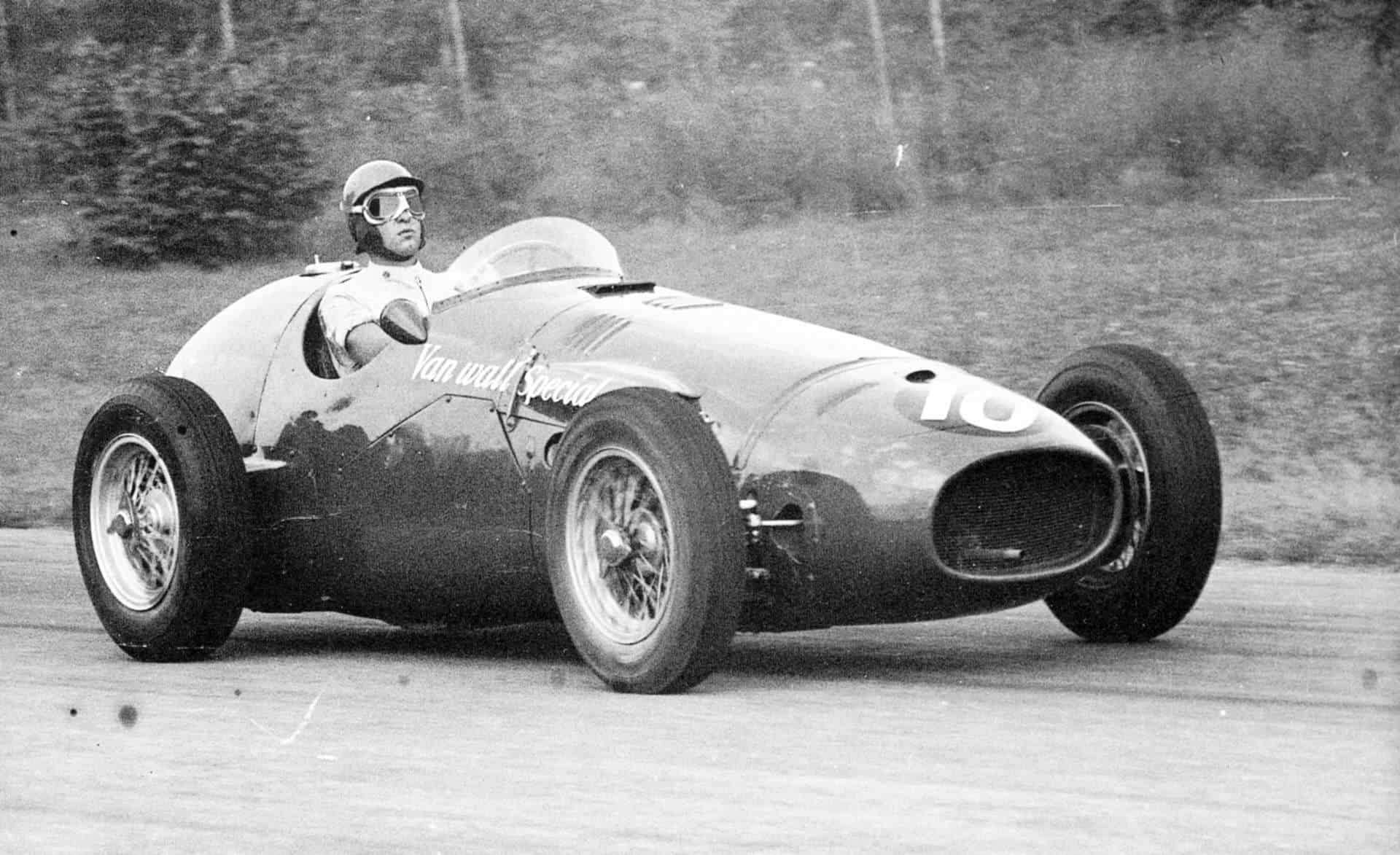
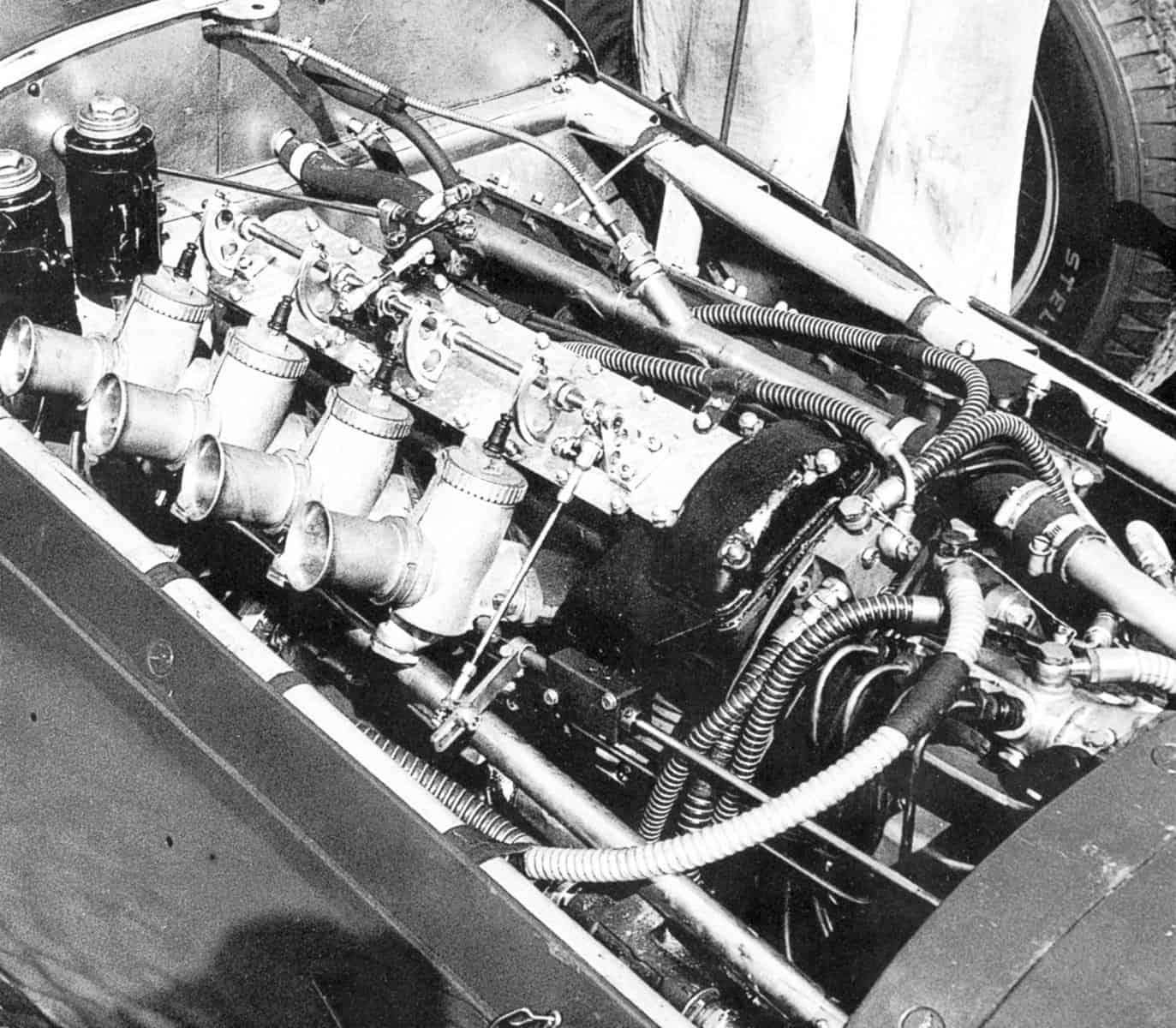
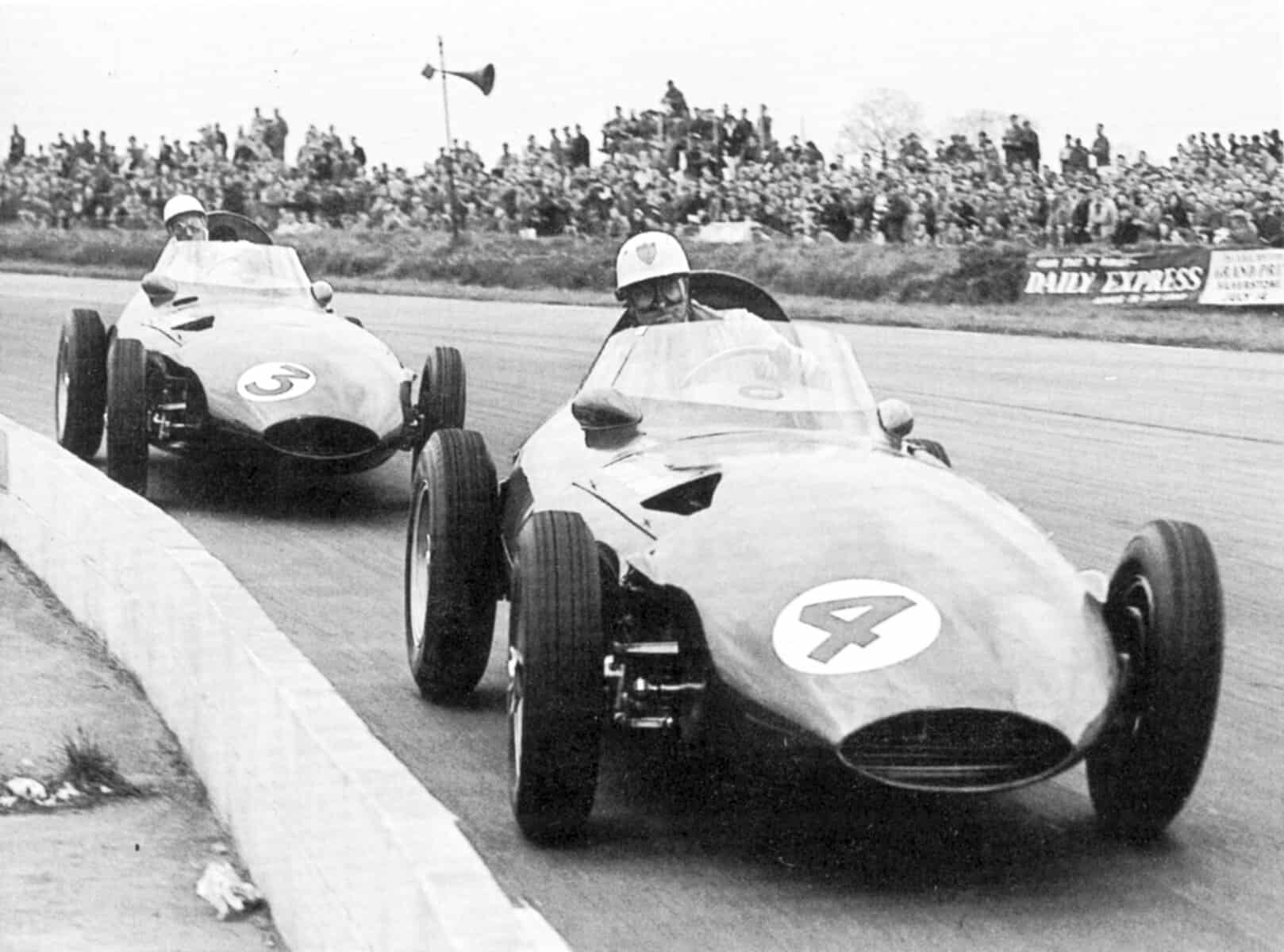
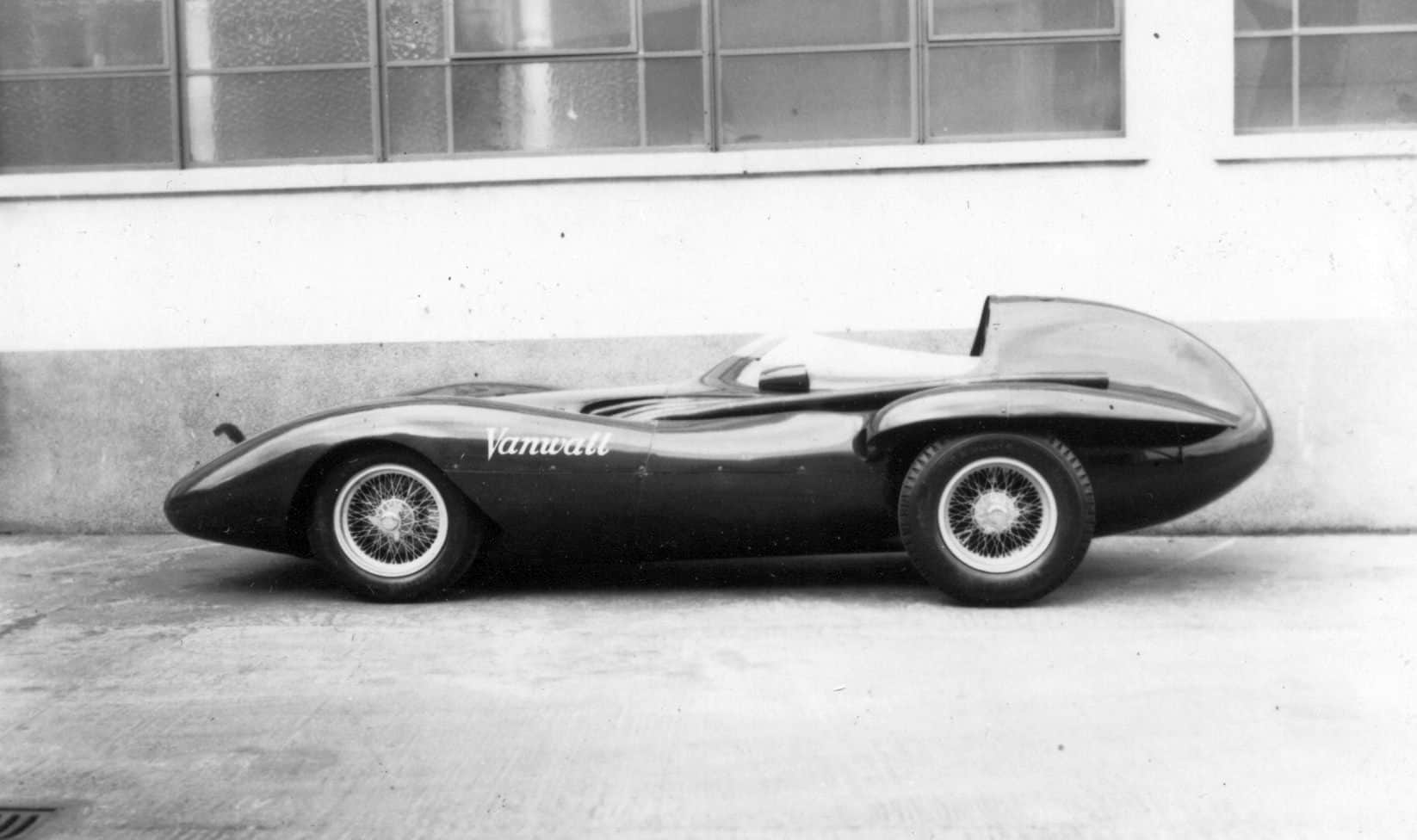
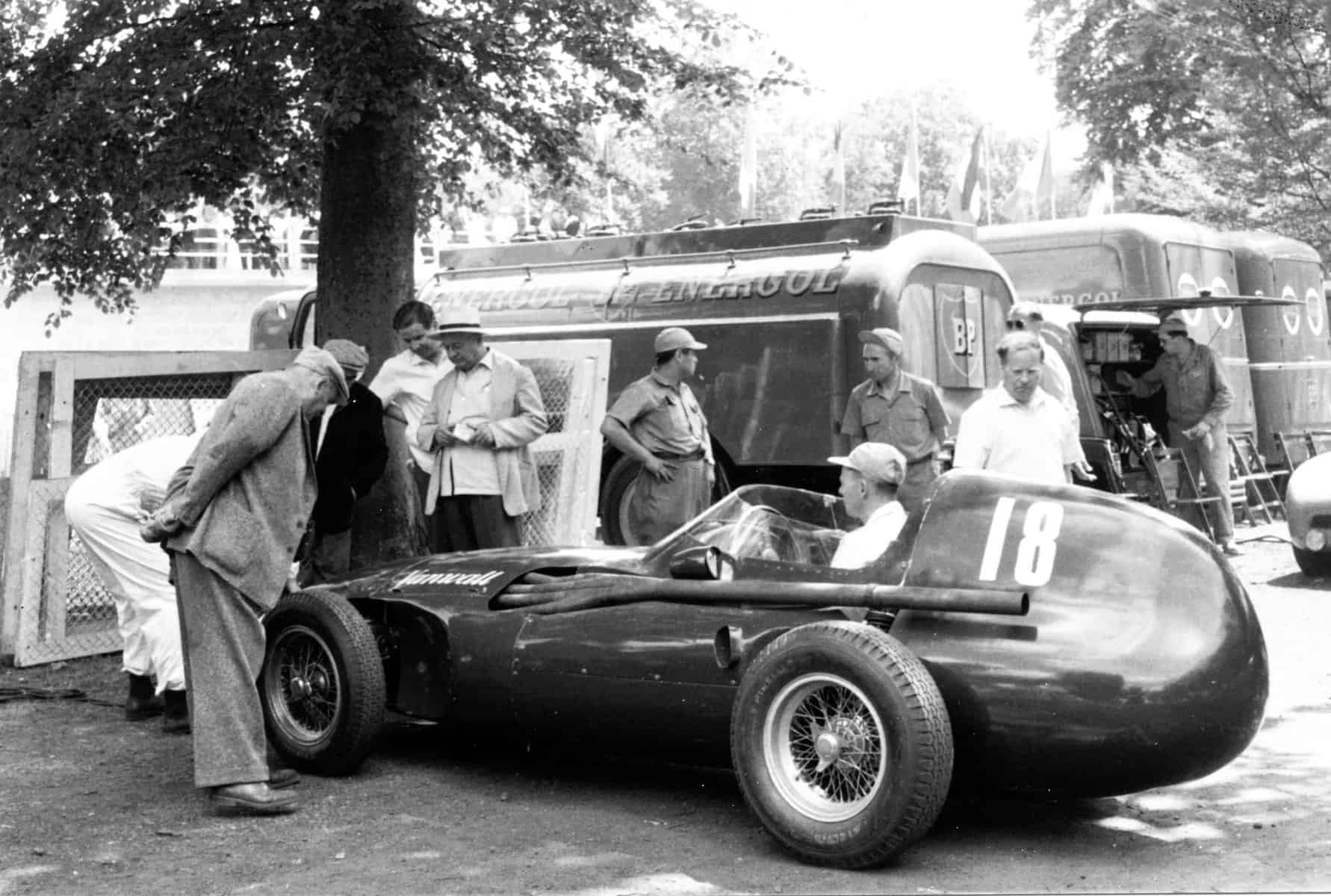
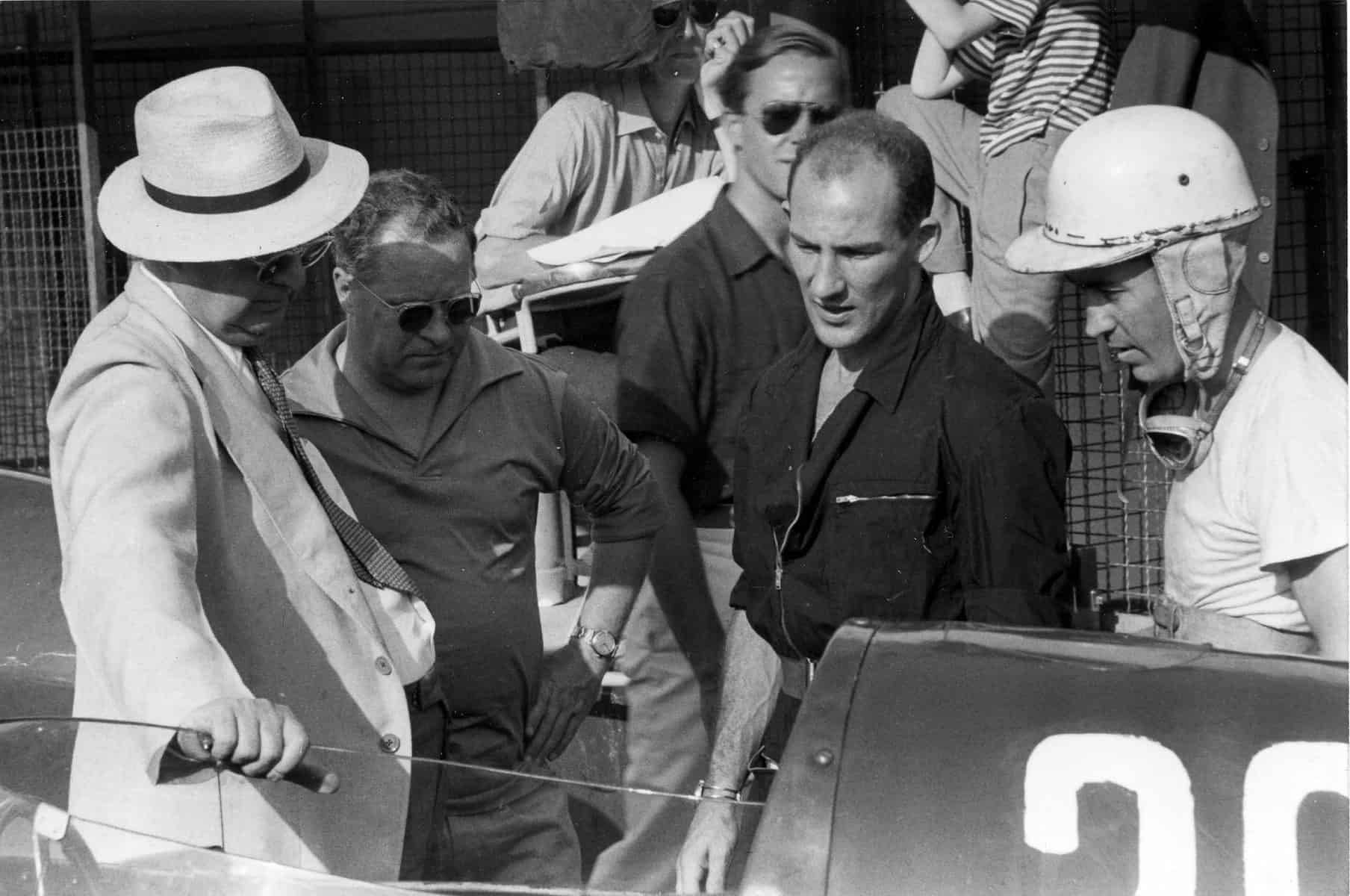
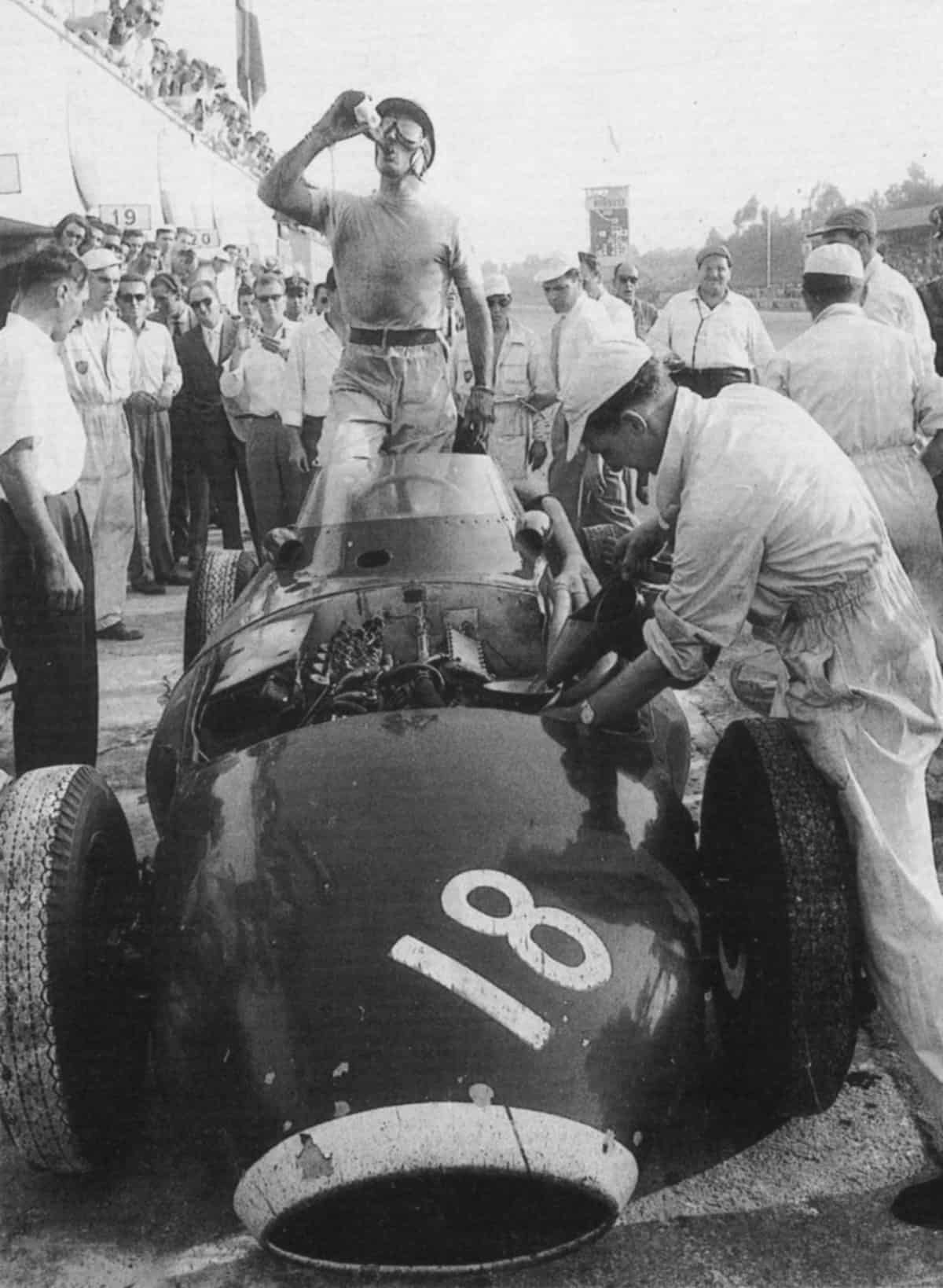
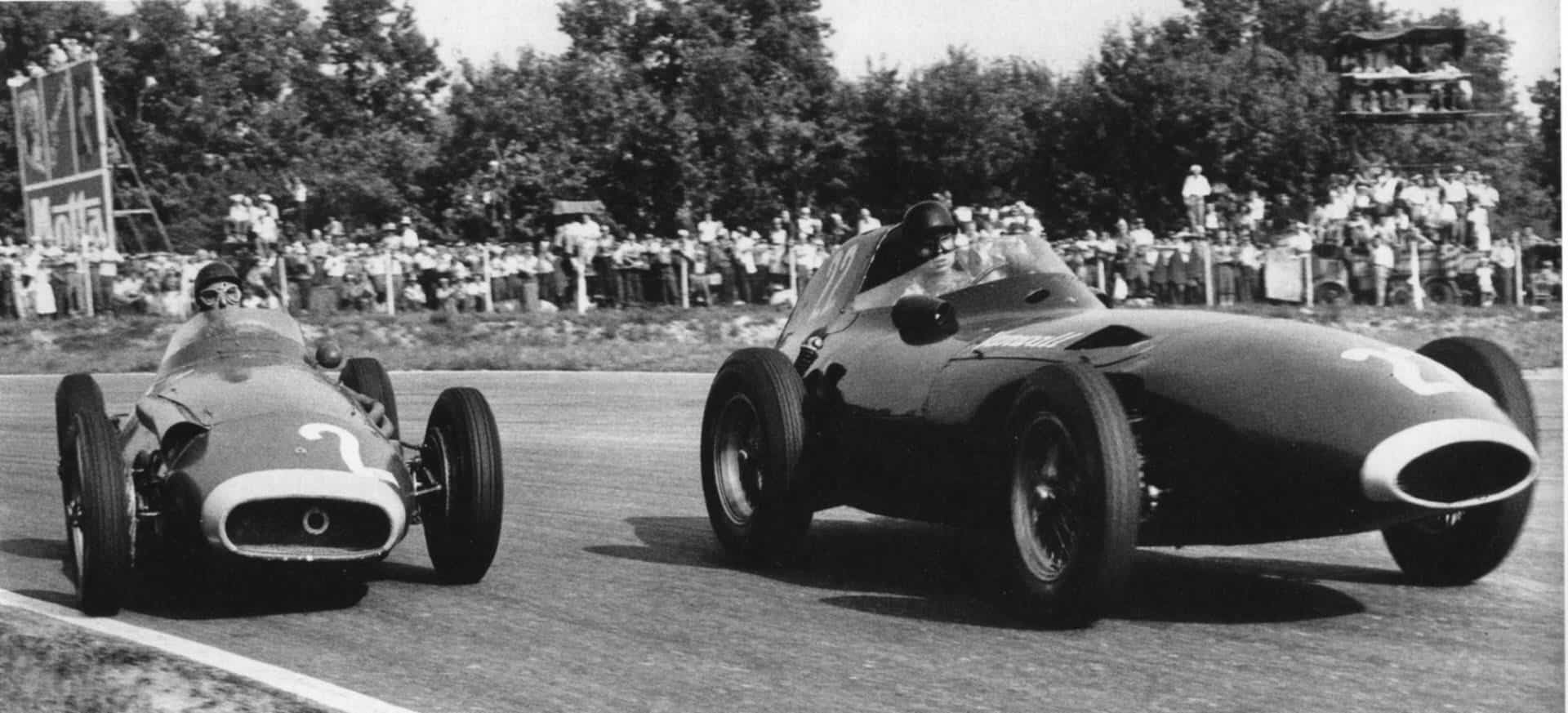
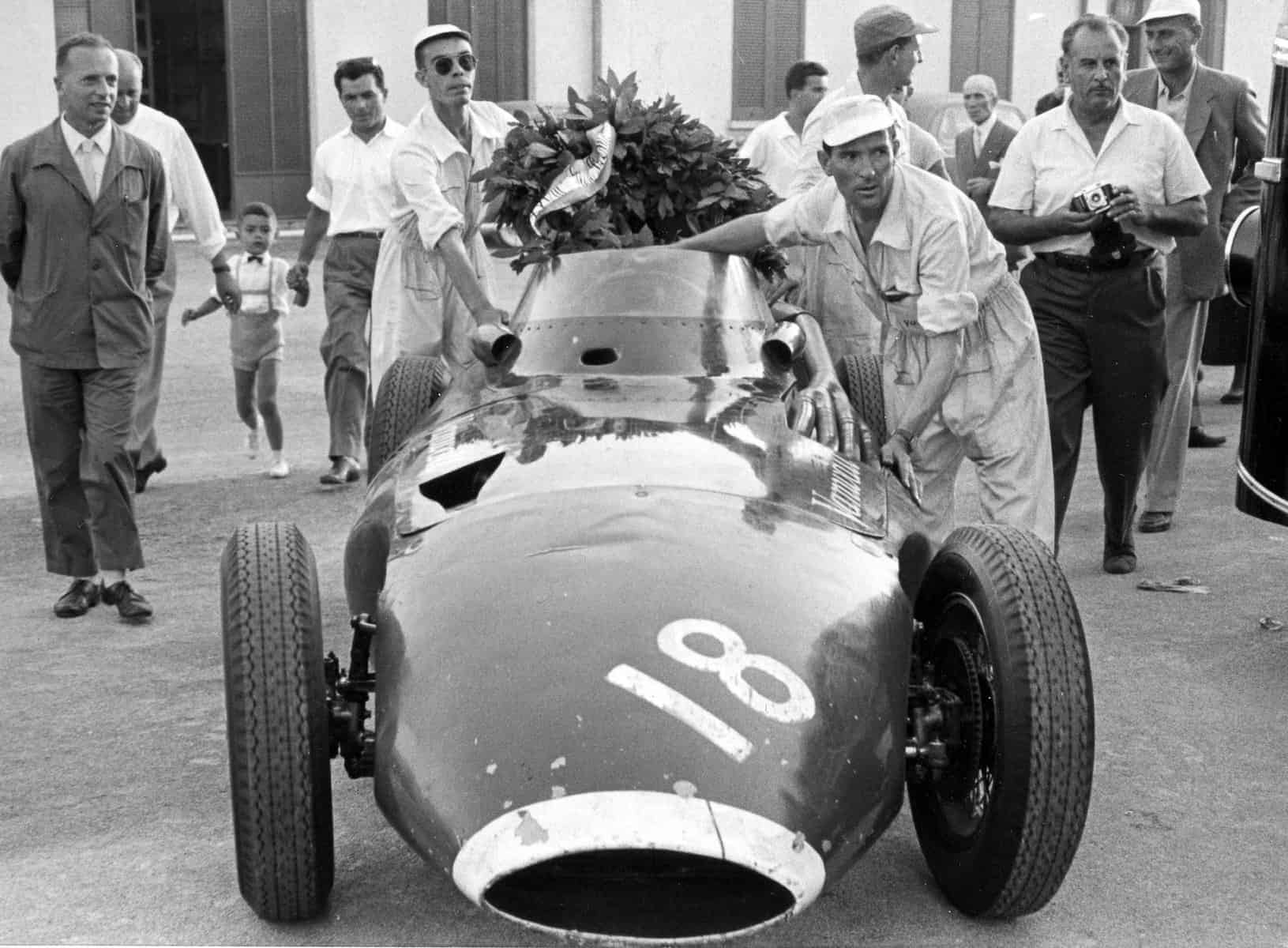

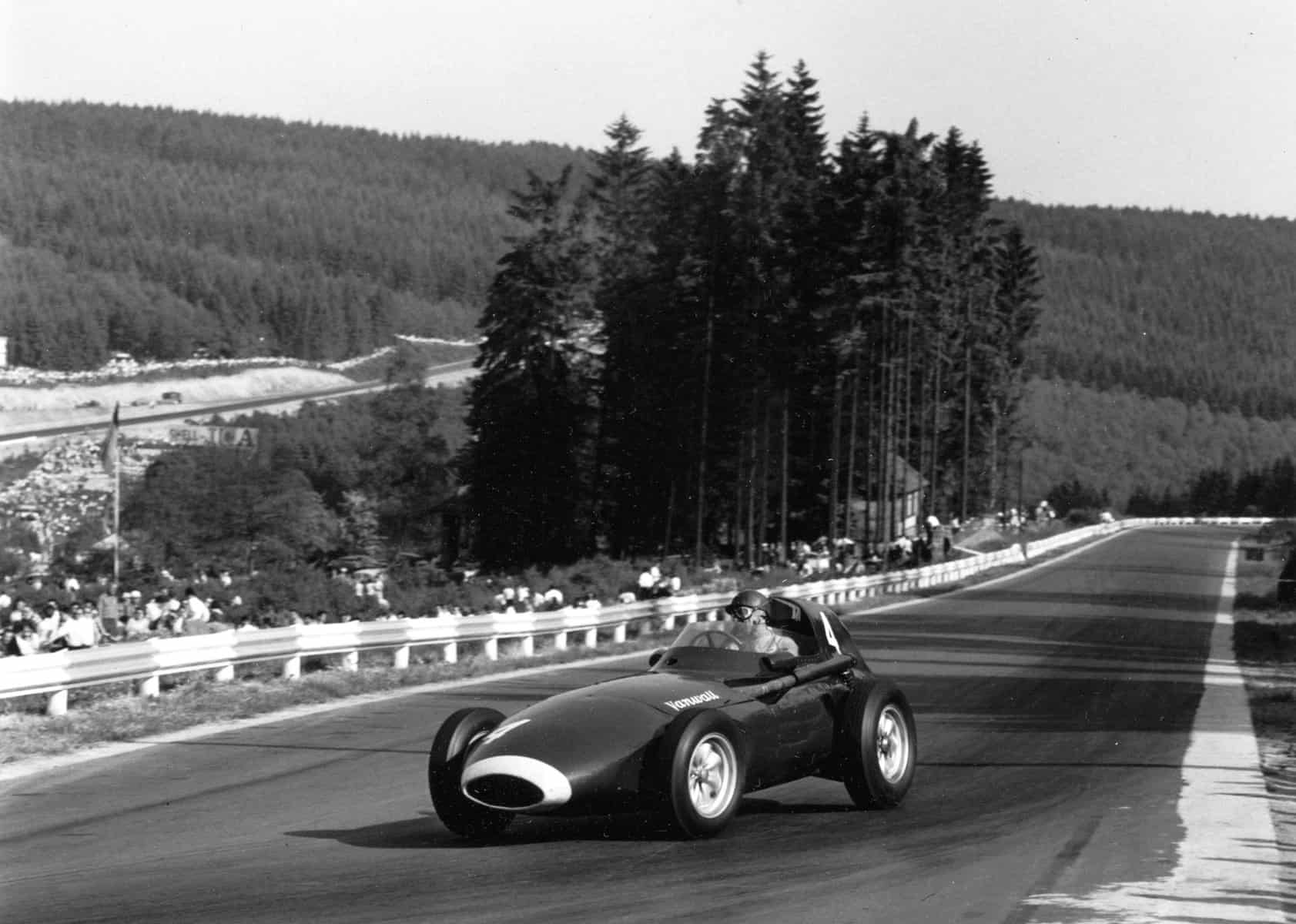
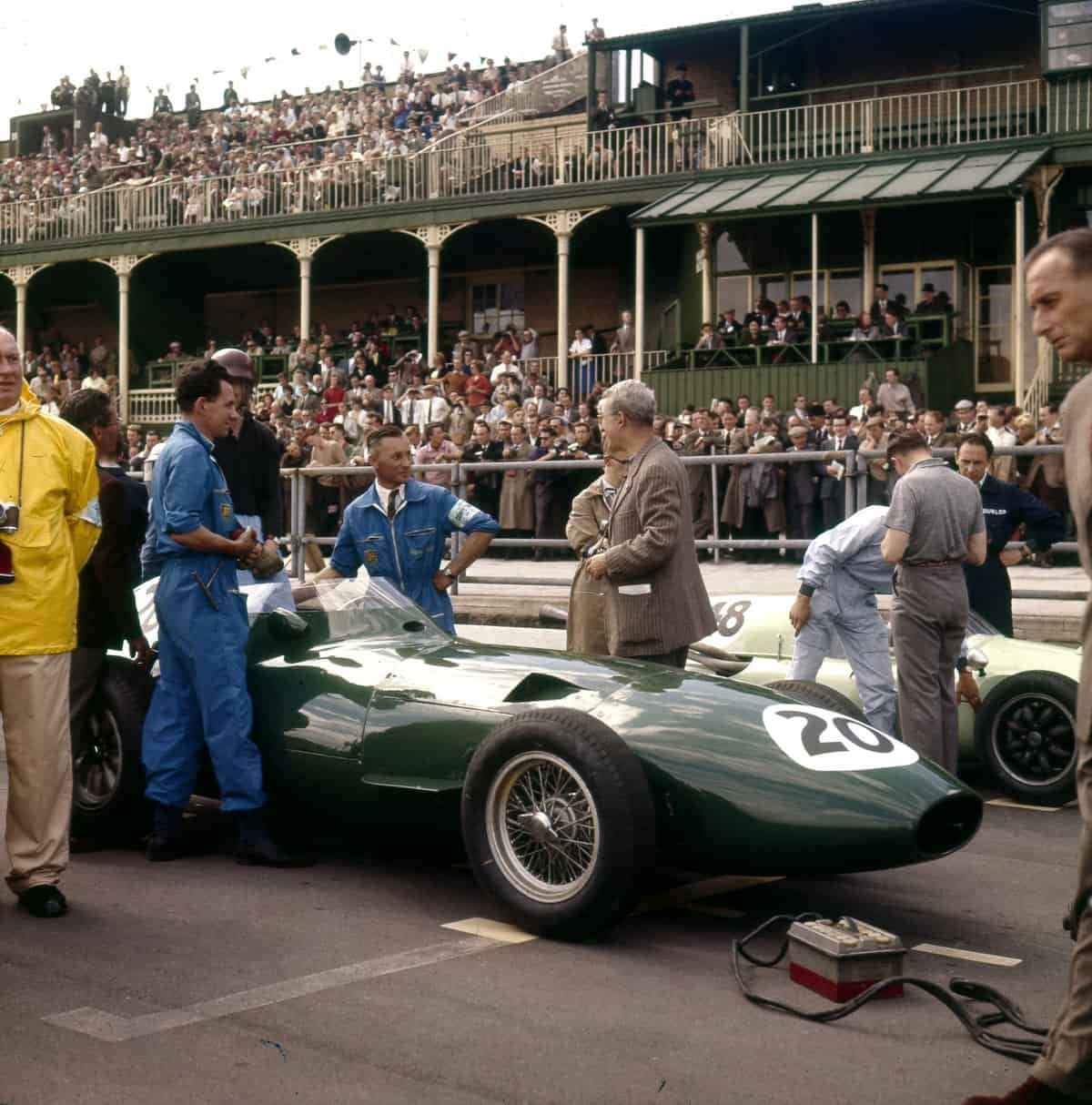


![alfa gtz perfectly imperfect webannerl[1]](https://automedia.revsinstitute.org/wp-content/uploads/2024/08/Alfa-GTZ-Perfectly-Imperfect-webannerl1-uai-1200x800.jpg)

